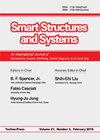A framework for fast estimation of structural seismic responses using ensemble machine learning model
IF 2.2
3区 工程技术
Q2 ENGINEERING, CIVIL
引用次数: 10
Abstract
While recognized as most rigorous procedure leading to 'exact' structural seismic responses, nonlinear time history analysis is usually time consuming and computational demanding, especially when numerous structures remain to be analyzed. This paper proposes a framework to improve the time efficiency in evaluating the structural seismic demands, using ensemble machine learning models based on 'classification-regression' philosophy. Typical tall pier bridges widely located in southwest China are employed as illustrative examples to validate the efficiency and performance of this proposed framework. The results and discussion show that with properly selected input variables, the proposed ensemble model (ORF-ANN herein) performs better in predicting seismic demands than other single learning algorithms (i.e., ANN and ORF), while the time efficiency is improved over 90%. This proposed model could drastically improve the efficiency for determining structural parameters in preliminary design process, and thus reduce the iterations of trail analysis. Additionally, the model constructed from proposed framework is believed especially favored for evaluating the post-earthquake states/resilience of a region and/or highway network, where thousands of structures might be contained, and conducting nonlinear time history analysis for each one would be prohibitively time consuming and delay the rescue operations.基于集成机器学习模型的结构地震响应快速估计框架
虽然非线性时程分析被认为是最严格的方法,可以获得“精确”的结构地震反应,但非线性时程分析通常耗时且计算量大,特别是在需要分析大量结构的情况下。本文提出了一个框架,以提高评估结构地震需求的时间效率,使用基于“分类-回归”哲学的集成机器学习模型。以中国西南地区广泛分布的典型高墩桥梁为例,验证了该框架的效率和性能。结果和讨论表明,在适当选择输入变量的情况下,本文提出的集成模型(ORF-ANN)在预测地震需求方面优于其他单一学习算法(即ANN和ORF),时间效率提高了90%以上。该模型可以大大提高初步设计过程中结构参数的确定效率,从而减少轨迹分析的迭代次数。此外,根据所提出的框架构建的模型被认为特别适用于评估一个地区和/或公路网的震后状态/恢复能力,其中可能包含数千个结构,并且对每个结构进行非线性时程分析将非常耗时并延迟救援行动。
本文章由计算机程序翻译,如有差异,请以英文原文为准。
求助全文
约1分钟内获得全文
求助全文
来源期刊

Smart Structures and Systems
工程技术-工程:机械
CiteScore
6.50
自引率
8.60%
发文量
0
审稿时长
9 months
期刊介绍:
An International Journal of Mechatronics, Sensors, Monitoring, Control, Diagnosis, and Management airns at providing a major publication channel for researchers in the general area of smart structures and systems. Typical subjects considered by the journal include:
Sensors/Actuators(Materials/devices/ informatics/networking)
Structural Health Monitoring and Control
Diagnosis/Prognosis
Life Cycle Engineering(planning/design/ maintenance/renewal)
and related areas.
 求助内容:
求助内容: 应助结果提醒方式:
应助结果提醒方式:


